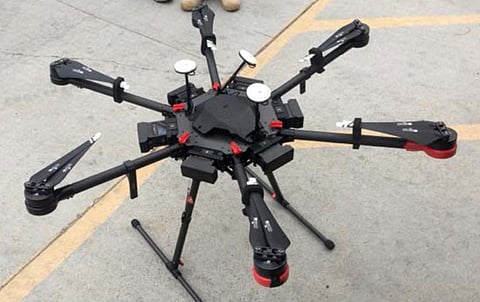Securing the ‘Game of Drones’
Drones are essentially flying sensors that are communicating via the internet, capturing and transmitting data to the cloud — it no surprise that they present a host of security concerns

From relative obscurity to a mainstream prop in just a few years, drones have become a common sight around the world. Used at events to capture creative visuals; by military for controlled air strikes; to deliver goods to monitor weather and to survey tall buildings, drones have become the latest game changer, increasingly playing an important role both with the public and private sectors. These remote-controlled machines, are making working life easier within a range of sectors, including farming, utilities and logistics to name a few. All over the world, drones are being put to the test to drive efficiency, resulting in firms saving more in terms of cost and time while simultaneously increasing accuracy and quality.
The production of drones for personal and commercial use is growing rapidly, with global market revenue expected to grow to more than $6 billion (Dh22 billion) in 2017 and to more than $11.2 billion by 2020, according to Gartner. Almost three million drones will be produced in 2017, 39 per cent more than in 2016. This growth is driven mainly by three key factors: Regulatory clarification, lowered costs and most importantly, the ongoing innovation that makes drones important data collection machines.
The use of drones is exploding around the world. While several countries have been wading through layers of government regulations and approvals to use drones, they are now seen to be making progress. In the UAE, the General Civil Aviation Authority (GCAA) regulates the aviation industry and protects the safety and security of Dubai’s aerospace, including the use of drones. Currently, drones are not permitted within five kilometres of UAE airports to avoid mid-air collisions. The GCAA has introduced tougher regulations on the operation of drones by the public, allowing them to use drones only if they have a government permit. However, there are entities such as Dubai Silicon Oasis Authority and Dubai Electricity and Water Authority using drones for effective monitoring.
As drones become more mainstream within the public and private sectors locally and internationally, it is key to address the range of security concerns they bring with them. Armed with an array of sensors, drones are a new source of digital information. However, with drones flying overhead, apps tracking our moves and more personal and sensitive data flowing into cyberspace, there is a widespread concern that this data will end up in the wrong hands. For example, hackers have the possibility of hacking into WiFi networks by using drones to intercept sensitive information. Drones are essentially flying sensors that communicate via the internet, capturing and transmitting data to the cloud — it is no surprise that they present a host of security concerns. How do we overcome these security challenges?
Fortunately, there is a way to tackle this potential challenge. Below are some principles for constructing a robust and secure infrastructure:
n Security by design:
Developers should assess the security needs of drones by conducting a rigorous risk-evaluation at the very beginning of the drone design process. Security by design needs to include a detailed audit, analysing the risks and considering the dynamic nature of cyber threats. The assessment should include all elements: The device, the cloud, and the networks — it should measure the impact of fraud against the cost of what needs to be protected, achieving a balance.
n Securing the drone itself:
There are two steps to securing the device (in this case, the drone), the first of which involves equipping them with robust identities. To protect their integrity — identity, device software and its configuration, — manufacturers have to invest in appropriate security frameworks, whether they are hardware-based, software-based or a combination of both. A crucial part of building secure identities in drones is ‘authentication’ — these connected devices must be able to conduct mutual authentication with other devices, the cloud, the network, so only authorised access is permitted. In addition, security life cycle management needs to be deployed. What this means is ensuring that the drone can adapt to dynamic threats through downloading software, software patches and security updates on a regular basis.
n Secure the cloud:
A secure IoT infrastructure must also protect data, both in motion or at rest, and ensure it is correctly encrypted. Access to the drone’s data from consuming systems (smartphones, tablets) or application servers should be rigidly controlled through strong authentication mechanisms.
n Secure the networks, protecting data in the network:
On every step of its journey, data coming from drones need to be protected, otherwise it could fall into the wrong hands. Through a combination of techniques, such as applicative data, encryption and integrity protection, we can mitigate the risks of cyber-attack.
By following these principles, we can help to construct a secure ecosystem infrastructure, allowing drones to reach their full potential without jeopardising user trust.
The ‘Game of Drones’ is an exciting development. It is a remarkable tool with astounding capabilities and almost limitless mobility. Soon, drones will even be able to transport objects, creating a gamut of opportunities for various industries to tap into. We are only beginning to understand how governments and businesses can leverage this powerful tool to function more efficiently and even find new ways of working. However, security must be at the very core of every business strategy and decision-making. It is only when drones are safe and secure for use, that their impressive benefits can be truly realised.
Sherry Zameer is the SVP IoT for CISMEA Region, Gemalto.
Sign up for the Daily Briefing
Get the latest news and updates straight to your inbox



